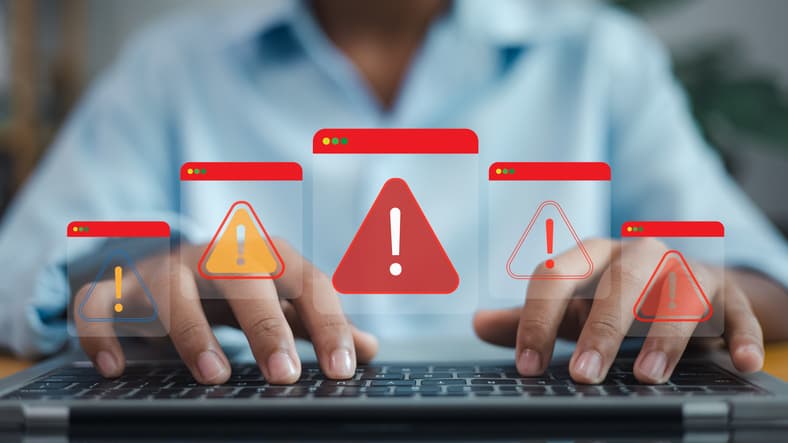
Few sectors evolve as rapidly, or as disruptively, as the technology sector. This is even more pronounced in the cybersecurity industry, as every new operating system update introduces fresh tools (and vulnerabilities), older systems reach end-of-life, and malicious hackers devise new strategies for acquiring valuable data. Successfully navigating and succeeding in the cybersecurity space means embracing constant, unrelenting change and meeting it with learning, innovation, and bold strategy.
Cybersecurity experts must be able to thrive in challenging and high-pressure situations and be driven by the thrill of complex problem-solving to achieve success. Should they be unable to keep up with the evolution of technology, clients’ critical, identifiable data could be stolen, key servers could be attacked, and entire companies’ reputations could be compromised overnight. For Douglas Lemott Jr., Chief Information Security Officer (CISO) for the Analysis and Resilience Center for Systemic Risk (ARC), these conditions and requirements are just part of the job.
With over thirty years of experience in IT and cybersecurity, Douglas Lemott Jr. is an accomplished and results-driven executive dedicated to addressing systemic risk and implementing compliant technology solutions. From establishing and executing advanced cybersecurity programs to supporting cloud infrastructure and design to meeting regulatory compliance requirements for data security, he’s done it all. Now, as the technology sector as a whole is in the midst of another evolution, he looks both to his career and the future of cybersecurity, anticipating the challenges to come.
The Future of Cybersecurity
To Douglas Lemott Jr., the most exciting and controversial trends in cybersecurity and national security are the convergence of artificial intelligence (AI) and cyber defense, particularly in the areas of threat detection and response. Traditionally, cybersecurity has been a reactive discipline, where analysts and IT specialists would wait for a security alert, investigate it, and then take steps to seal the breach. Modern AI technology enables predictive threat intelligence, where models analyze live data streams and flag anomalies in real time. Other tools are using machine learning to recognize novel attack vectors and adapt automatically.
“The scale and speed of modern cyber threats, from ransomware-as-a-service to AI-generated phishing, require defense mechanisms that are just as fast and intelligent,” Lemott explains. “The line between national security and cybersecurity is also blurring, especially as nation-states and proxy actors engage in hybrid warfare.”
Douglas Lemott Jr. anticipates that the cybersecurity and risk management industry will undergo significant changes over the next decade, driven by emerging trends and technologies. The slow development of security into an autonomous and adaptive tool promises to shift cybersecurity from reactive controls to predictive systems powered by machine learning and AI. As systems learn and adapt in real-time to detect novel threats, industry experts will shift their focus from data privacy and security to the next horizon.
“Cybersecurity and risk management will become more deeply integrated with business strategy, national security, and emerging technologies,” he says. “There will be a shift from data privacy focus to a focus on AI ethics, misuse prevention, and compliance. Organizations will need frameworks to address AI bias, adversarial attacks, and compliance with global regulations.”
That’s not the end of it either. He expects digital identity frameworks, such as decentralized identity or verifiable credentials, to replace traditional authentication methods, like passwords. Geopolitics will shape the cybersecurity strategies of the new world, as the focus shifts from corporate security to a hybrid cyber-national security, and cyber attacks follow suit. This will require cooperation between corporations and federal agencies worldwide to manage the shared threat landscape.
“The cybersecurity and risk field is moving from a technical support function to a strategic pillar; one that intersects with AI, geopolitics, and digital trust,” Lemott says. “The next 10 years will require a blend of technical depth, strategic thinking, and policy fluency.”
Wisdom For The Next Generation
Developments in technology demand similar development in leadership to keep up. The rapidly evolving threat landscape, regulatory complexity, and realities of business operations put cybersecurity leaders under incredible pressure. Threats are becoming increasingly sophisticated, while supply chain vulnerabilities are having a more significant impact than ever before. Leaders need to secure their cloud and remote environments without slowing innovation or adding any friction to the business’s digital experiences. The manifold demands of the cybersecurity space put pressure on industry leaders like Douglas Lemott Jr. to not only succeed but also prepare the next generation of leaders.
“Cybersecurity today is fast-paced, multi-dimensional, and requires both technical chops and a strategic mindset,” Lemott says. “If I were starting today, I'd focus more on hands-on learning, building a strong personal network, and understanding the bigger picture. Cybersecurity is not just about tech, it's about understanding systems, people, and risks at a strategic level.”
Anyone looking to start their career in cybersecurity or defense technology is stepping into an exciting, dynamic, and incredibly demanding field, with the potential to make a real impact on global security if they’re ambitious and skilled enough. To those people, Lemott has some advice. First, it is essential to establish a strong technical foundation, including networks, protocols, and operating systems, with a specific focus on how they interact and communicate with one another. These processes are where many vulnerabilities are found and exploited. Second, pursue and complete key certifications and training opportunities relevant to your chosen career goals, as they’ll signal competency to employers and provide structured learning. Finally, set up a home lab and pursue open-source projects to gain a broad range of practical experience.
Once a burgeoning cybersecurity expert has acquired the fundamentals and gained the necessary experience through certifications and projects, Lemott highly encourages them to build a robust network quickly. Whether that’s effectively engaging on Twitter or LinkedIn, or attending conferences or local meetups, building professional connections opens the door to internships, jobs, and most importantly, critical mentorships that’ll empower a career more than anything else.
“Whether you’re more interested in the technical aspects, policy and risk management, or defense tech specifically, there’s no one-size-fits-all path,” says Lemott. “Focus on continual learning, hands-on experience, and understanding the broader strategic implications of your work. Cybersecurity isn’t just about preventing breaches, it’s about enabling trust in our digital future.”


